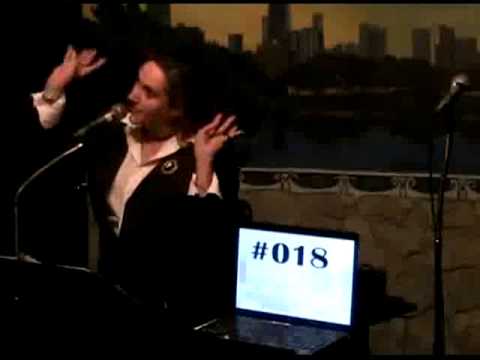Arsenic
Janet Kuypers

from the “ Periodic Table of Poetry” series
Arsenic.
Just the name sounds poisonous.
I know it’s an element
in the Periodic Table,
but this odorless, tasteless demon
can work its way into our water
and eventually kill us
from the inside out.
And the thing is, Arsenic
occurs naturally everywhere,
and we even use this poison
as a wood preservative,
it’s even used in paints, dyes, metals,
drugs, soaps. And even more frightening
for all you meat eaters,
high arsenic levels are in
animal feeding operations.
We seem to hunt down ways
to kill ourselves,
don’t we.
I read about Arsenic poisoning
and Napoleon’s death.
Breathing it in or ingesting it,
Dukes to Kings were poisoned…
Even impressionist painters
used the pigment Emerald Green
which contained Arsenic, causing
diabetes, blindness, neurological disorders.
Scary stuff, this Arsenic.
So then I heard NASA announce
that Arsenic-based life forms
were discovered on Earth.
Strange stuff, this Arsenic.
I mean, how could something that kills
actually help produce life?
How could this happen?
Okay, go back to my science book:
in order for life to exist,
we need these six elements:
carbon,
hydrogen,
nitrogen,
oxygen,
phosphorus
and sulfur.
So, where does Arsenic
fit into the picture?
Well, it looks like NASA scientists
were trying to see if any bacterium
could ever live
in an Arsenic-flooded environment.
So they went to
Mono Lake, California,
to see if anything could thrive
with a surplus of salts
and excesses of Arsenic.
So, in that elemental sextet of life,
they pulled out phosphorus,
to see what any bacteria species
might do.
Lo and behold,
the extremophilic species GFAJ-1
just decided to use Arsenic
instead of phosphorus,
and with all the Arsenic around them,
the bacteria thrived quite well.
And the name “GFAJ-1”
actually stands for
“Give Felisa a Job”.
Really.
So I guess it’s not hard to believe
that in their search
they we able to find
even more bizarre life in California
than we were used to.
And Mono Lake has always had
a productive ecosystem.
And many bacteria can tolerate
the high levels of arsenic,
or even take it in their cells.
But they just now proved,
that when starved of phosphorus,
some species could even grow
with Arsenic.
Hmmm.
Perplexing stuff, this Arsenic.
I don’t know if we want to create
Arsenic life forms here on Earth,
but knowing this is possible
increases the probability
of finding life elsewhere in the universe.
Spooky stuff, this Arsenic.
And who knows,
Arsenic in place of phosphorus on Earth
may date back to the origin of life,
where it may have occurred
in arsenic-rich hydrothermal vents.
Fascinating,
this speculating
about Arsenic.
And Darwinism may show
that species can adapt to survive —
I mean, we have found that bacteria
can adapt to artificially stringent
environmental conditions.
And who knows, maybe the NASA claim
that arsenic had been incorporated
into the backbone of DNA is not
ultimately true, I mean, Arsenic
just stepped in for the missing phosphorous,
so there may be no Arsenic in the DNA at all.
So give NASA a break,
they’re trying…
Because scientifically supported
statements or not,
it’s nice to know
that we’re looking at all possibilities
when looking for what is ultimately
good for life in this universe.


